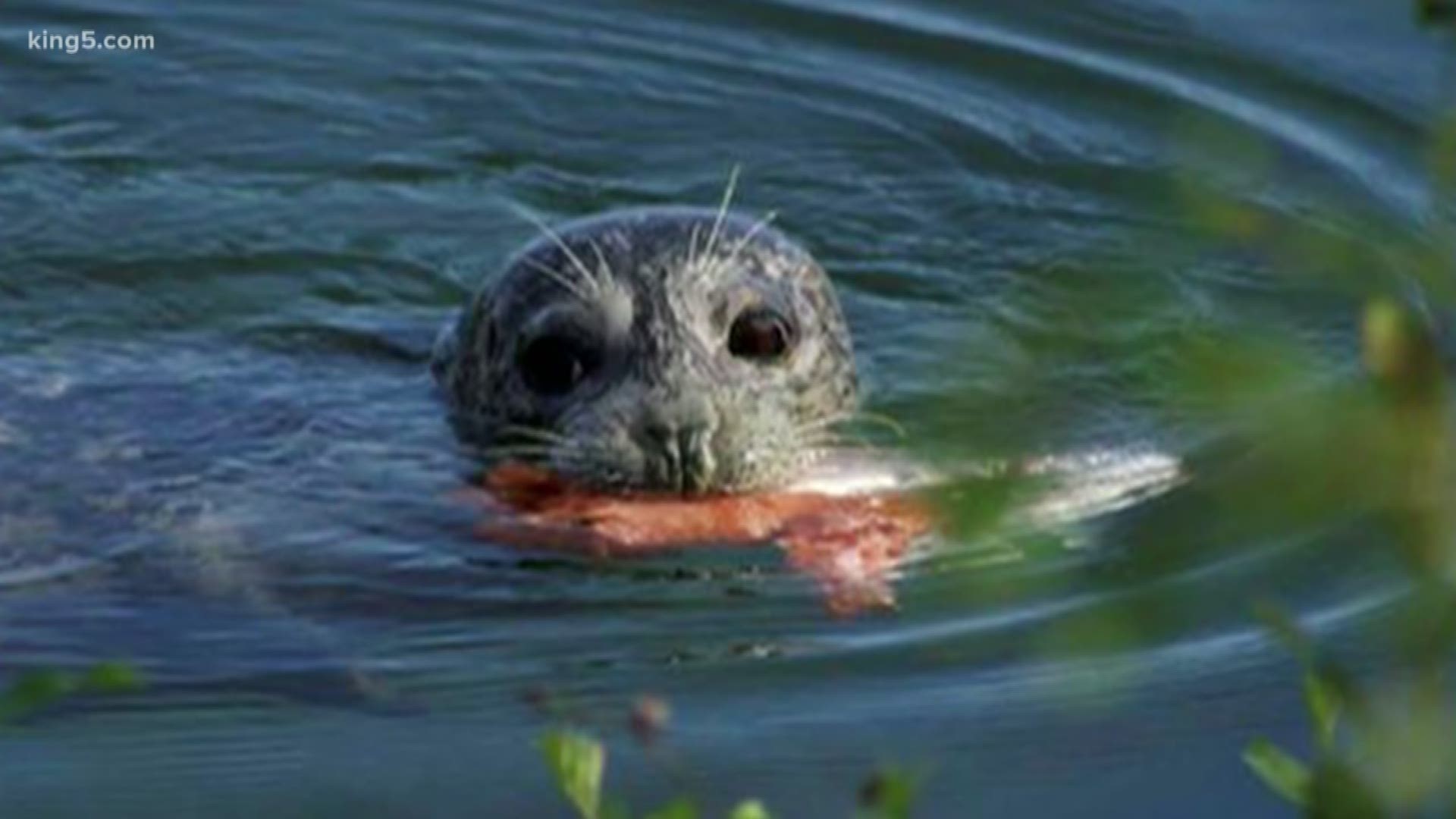MANCHESTER, Washington — Seals and sea lions are competing with the Southern Resident killer whales for limited Chinook salmon stock. That has some people calling for a cull where the government would organize the hunting and killing of a certain percentage of sea lions and seals.
Sea lions and seals are often seen as adversaries of fishermen. Last year, more than a dozen sea lions were shot, many in the head, and washed up around Puget Sound; mostly in West Seattle.
A recent paper published by federal scientists shows pinnipeds eat twice as much salmon as Southern Resident killer whales in Puget Sound, and six times more salmon than recreational and commercial fishermen combined.
It's created quite the debate over the recovery of Southern Resident killer whales who depend on salmon as their main food source.
Should seals and sea lions be killed to save orcas? The question is complex and scientists don't all agree. Most aren't sure if it would work. They're also turning their attention to what they believe is the preferred prey of pinnipeds: forage fish.
At National Oceanic and Atmospheric Administration's Manchester lab, scientists are studying steelhead migration through Puget Sound.
"We've been studying the survival of steelhead smolts as they migrate through Puget Sound and trying to figure out why they are dying as they make their brief migration from the river mouths to the ocean," explained Barry Berejikian. "What we have been seeing is that in years when steelhead survival is high, we don’t see much evidence that harbor seals are preying on them. When steelhead survival is low, we do see evidence of that. So that has us now looking at, what are the ecosystem factors that contribute to years when survival is high versus when it is low?"
Berejikian is a Supervisory Research Fisheries Biologist with NOAA's Northwest Fisheries Science Center. They've implanted acoustic transmitters in steelhead that are detected by hydrophones on the floor of Puget Sound.
They've also put detectors on harbor seals to see how they interact with the steelhead.
In some cases, they found the fish transmitters where harbor seals spend time on land, indicating they are eating the fish.
But they also noticed some years the seals ate more, and some years they ate less. They believe it's connected to abundance of fish like anchovies and herring.
"These other prey resources such as herring and anchovies and other bottom fish are much higher in fat and much more abundant. We think that seals and other things that prey on steelhead and salmon would prefer to eat those if they were abundant and when they are abundant," Berejikian said.
Berejikian believes seals and sea lions would prefer smaller forage fish but those fish aren't always here. The research has started to see a connection between warmer water and an increase in anchovies.
And when there are more anchovies, less steelhead are eaten by seals and sea lions.
"Essentially what we are saying is that, if we are right about this, if that predation is greater on salmon and steelhead when other forage fish and other fish abundance is low, then really what we are talking about is restoration of the Puget Sound ecosystem to support these other prey species," Berejikian said.
Join us on April 30 and May 8 from 7:30 pm – 8:30 p.m. for live expert panels discussing themes central to the livelihood of Southern Residents. Visit king5.com, our Facebook page or YouTube page to ask questions and make comments directly to those on the front lines of recovery. Learn more about our “Saving the Orcas” series here.

